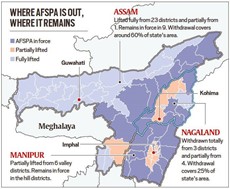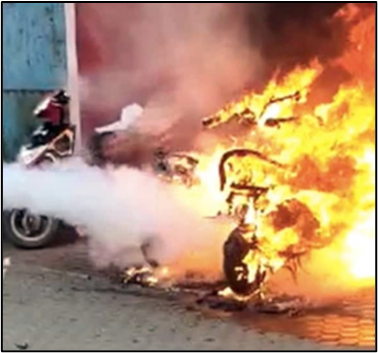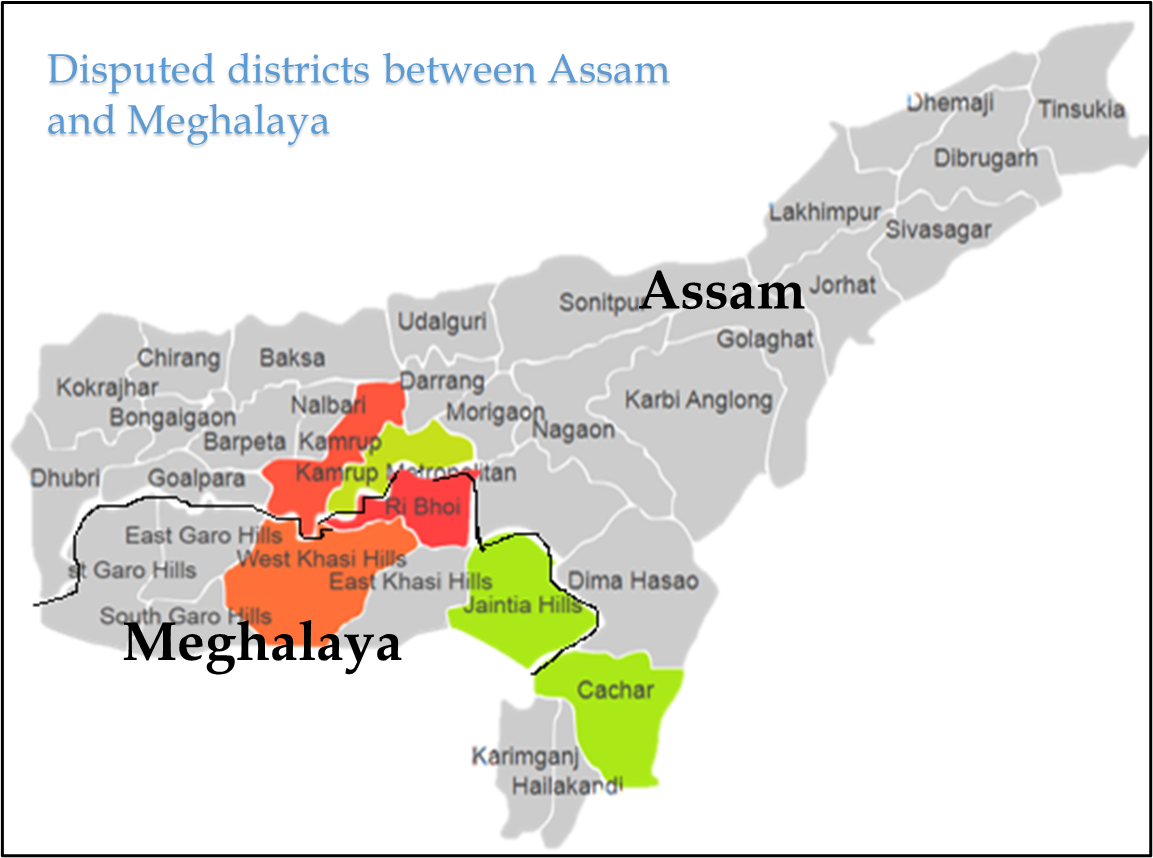Tuesday, 1st March 2022
IPCC Report – Climate Change 2022
In News
The Intergovernmental Panel on Climate Change has released the second of three review reports from the world's foremost body of climate researchers titled, “Climate Change 2022 – Impacts, Adaptation and Vulnerability.”
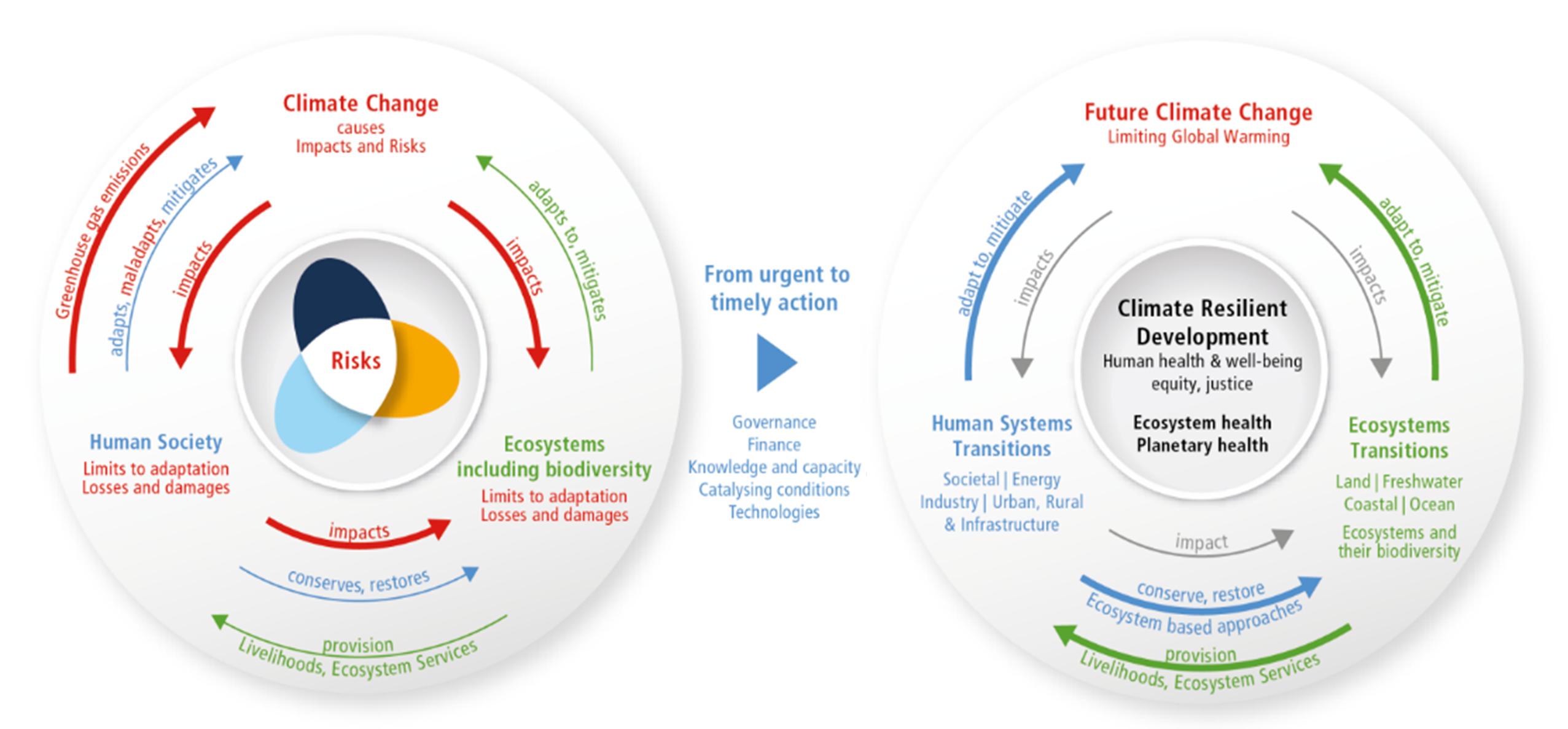
Findings of the Report
This report recognizes the interdependence of climate, ecosystems and biodiversity, and human societies and integrates knowledge more strongly than before.
- Observed Impacts from Climate Change: Rise in spread of diseases, increased mental health concerns are some of the health impacts of climate change. Species loss and habitat change of the species around the world has been observed.
- About half of the living organisms assessed in the report are already moving to higher ground or towards the poles.
- While up to 14% of species assessed will likely face a very high risk of extinction if the world warms by 1.5C, this will rise to up to 29% of species at 3C of warming.
- For creatures living in areas that are classed as vulnerable biodiversity hotspots, their already very high extinction risk is expected to double as warming rises towards 2C, and to go up tenfold if the world goes to 3C.
- Vulnerability and Exposure of Ecosystems and People: Vulnerability of ecosystems and people to climate change differs substantially among and within regions.
- Some researchers have speculated that going over 1.5C for a short period would be acceptable if temperatures came back down below the level soon afterwards.
- But, in case of any overshoot there's an increasing risk of hitting tipping points and triggering feedback, in the climate system, like permafrost thawing.
- Risks in the near term (2021-2040) and mid-term (2041–2100): The report highlights expected rise in global temperatures, currently around 1.1C, heading to 1.5C in the near term. In the longer run, such risks may become more devastating.
- Continued and accelerating sea level rise will increasingly hit coastal settlements pushing them towards submergence and loss.
- Near-term actions that limit global warming to close to 1.5°C would substantially reduce projected losses and damages but cannot eliminate them all.
- Complex, Compound and Cascading Risks: New and multiple climate hazards will occur simultaneously, and multiple climatic and non-climatic risks will interact, resulting in compounding overall risk and risks cascading across sectors and regions.
- Adaptation Measures: Despite progress in adaptation planning and implementation, adaptation progress is unevenly distributed with observed adaptation gaps. Future adaptation measures need to be feasible, effective, integrated and multi sectoral.
- Soft limits of adaptation arise when technological and socioeconomic options are not immediately available to avoid risks through adaptive action, meaning that impacts and risks remain unavoidable for the moment.
- Hard limits of adaptation occurs when adaptive actions become infeasible to avoid risks, and hence impacts and risks become unavoidable.
- Maladaptation is when climate change adaptation actions backfire and have the opposite of the intended effect – increasing vulnerability rather than decreasing it.
- Climate resilient development: Climate resilient development is enabled when governments, civil society and the private sector make integrated and inclusive development choices that prioritise risk reduction, equity and justice.
- Although cities pose many risks and losses due to extreme unsustainable growth it offers a critical opportunity in the near-term, to advance climate resilient development.
- The report is critical of technological fixes like deflecting the Sun's rays or removing carbon dioxide from the air, saying they could make things worse.
Impact on India
- In South Asia, extreme climatic conditions are threatening food security, thus agro-based economies like India and Pakistan are the most vulnerable to climate change in this regard.
- India’s GDP will be hit by changes in the monsoon as farming and fishing get adversely affected.
- More intense heat waves of longer duration and higher frequency are projected over India. ‘Wet bulb’ temperatures in India, which measure both heat and humidity, will reach 31 degrees Celsius — lethal for human beings — if emissions are not drastically cut.
- Resonating with the other mega-cities around the world, increased climate risk may induce high risk of sea-level rise and flooding in Mumbai and heatwaves in Ahmedabad.
- Even though India is one of the South Asian countries to record the most number of urban adaptation initiatives, these plans are marred by uneven distribution of funds and “priority”, with larger cities receiving greater focus.

Sources:
- Climate change: IPCC report warns of ‘irreversible’ impacts of global warming:
- Climate change: IPCC report :
- Loss and Damage and limits to adaptation: recent IPCC insights and implications for climate science and policy:
- IPCC report: Heat, humidity, sea rise to make India uninhabitable if emissions not cut:
Thermobaric rockets
In News
Concerns are mounting that Russia is preparing to use thermobaric weapons as part of its invasion of Ukraine.
About the News
- TOS-1 thermobaric rocket launchers have been recently seen moving towards the capital, Kyiv, and other cities of Ukraine.
- Although they are not used for precision strikes, but can be deployed for clearing stretches of ground.
- Previously, Russia has allegedly used these missiles in Chechnya and Syria.
What are thermobaric rockets?
- The TOS-1A, which Russia categorizes as a "heavy flamethrower," is a unique type of multiple launch rocket system (MLRS) based on a T-72 tank chassis.
- The weapons come in various sizes, from rocket-propelled grenades designed for close combat, to large versions that can be deployed from planes.
- Also known as the Father of All Bombs, it is a super-powerful non-nuclear bomb that has a blast equivalent to more than 44 tons of TNT.
- The explosives ignite the surrounding air, producing a lethal shock wave and sucking the air from the lungs of anyone in the vicinity. It fills the lungs with toxic, flammable particles which start killing the targeted person from the inside out.
- Far more powerful than conventional explosives, thermobaric weapons — also known as fuel-air bombs and vacuum bombs — also have a longer burn time, which increases their destructive capacity.
- The nature of their blast means the bombs are effective in open areas, as well as confined spaces, such as bunkers, caves and urban areas.
- The idea for the weapons has been around since World War II. However, it was some time before they were deployed.
Sources:
Veto power at UNSC
In News
With Russia vetoing a UN Security Council (UNSC) resolution on Ukraine, the 15-member UNSC will be voting to call a rare emergency special session of the entire 193-member UN General Assembly (UNGA).
About the News
- Such emergency sessions have been convened by the UNGA only 10 times in the past since 1950, a majority of which concerned the Israel-Palestine conflict.
- It is important to understand that there is a difference between resolutions passed in the Security Council and the ones passed in the General Assembly.
- When a resolution goes to vote in the General Assembly, none of the permanent five members can use their veto.
- However, unlike resolutions passed in the Security Council, these are non-binding on member states.
- However, such resolutions carry political weight.

Understanding Veto
- What is it: A veto is a negative vote and is the most significant distinction between permanent and non-permanent members.
- How are decisions taken? According to Article 27(3) of the UN Charter, all substantive decisions of the Council must be made with “the concurring votes of the permanent members”.
- However, permanent members can block a draft resolution by using a veto to defend their national interests or to uphold a tenet of their foreign policy.
- Symbolic support: On some occasions, a country introduces a resolution in the UNSC and puts it to vote, despite knowing that it would be vetoed to demonstrate symbolic support for an issue and to document the record of positions held within the council.
- Which P5 member has used the most vetoes? A total of 293 vetoes have been cast in the top UN body, and Russia/Soviet Union has almost half of the total number, with 143 vetoes.
- Since 1992, after the fall of the Soviet Union, Russia has been the most frequent user of the veto, followed by the US and UK.
- Member with least Vetoes: China has used the veto the least out of all permanent members- only 16 times. However, it has become increasingly active on this front, casting 13 of its 16 vetoes since 1997.
- Do vetoes work in emergency sessions in General Assembly? Vetoes cannot be applied during emergency special sessions in the General Assembly.
- The resolution that allowed emergency special sessions to come into existence is known as the ‘Uniting for Peace’ resolution.
- It states that where the Security Council, “because of lack of unanimity of the permanent members”, fails to exercise its primary responsibility for the maintenance of international peace and security, the General Assembly shall “seize itself of the matter”.
- The General Assembly, when not in session, can convene an emergency special session at the request of the Security Council or of a majority of its own members.
- Then again, whatever measures adopted are non-binding.
- Veto restraint in case of genocide, crimes against humanity: Since 2005, Costa Rica, Jordan, Liechtenstein, Singapore and Switzerland, collectively nicknamed the Small Five (S5) has been suggesting the permanent members to refrain from using a veto to block Council action aimed at preventing or ending genocide, war crimes and crimes against humanity.
- Though disbanded in 2012, the S5’s agenda was taken up by various other member states in the years following.
Source:
Picture source:
Zero Discrimination Day
ON March 1 2014, Zero Discrimination Day was observed for the very first time. To battle against the mentality that sparks issues, cases of violence, or general violence, Zero Discrimination Day is observed every year on March 1. The day was first launched by Michel Sidibe, director, UNAIDS, in December 2013. In India, this day backed the movement of the LGBTQIA+ community in India to repeal section 377 that criminalised homosexuality in the country. The law was finally repealed in September 2018. This year, the theme for Zero Discrimination Day is ‘Remove Laws That Harm, Create Laws That Empower.’ The theme signifies the ardent need to fight and take action against the myriad discriminatory laws in multiple countries that result in people being treated differently. While some laws harm the sanctity of human rights, some seem to cripple the fundamental freedom in society. The official symbol representing Zero Discrimination Day is a butterfly that is widely shared on various social media platforms along with the movement that one is supporting.
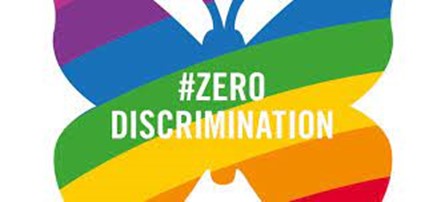
Sources:
Understanding India’s stance on the Russian invasion
In News
India has abstained from a procedural vote taken in the United Nations Security Council (UNSC) to call for a rare special emergency session of the UN General Assembly on Russia’s aggression against Ukraine.
About the Resolution at UNSC
- The resolution did not pass as permanent member Russia used its veto. In the 15-member UN Security Council, the resolution received 11 votes in favour and three abstentions, including by India, China and the UAE.
- India’s abstention is being viewed as a repeat of 2014, when in the aftermath of Russia’s annexation of Crimea from Ukraine, India abstained from a resolution backed by Ukraine, the US and the EU that sought to condemn Kremlin's actions in the General Assembly vote in March, 2014.
What is India’s Stance on the current crisis?
- By abstaining from voting at UNSC, India has retained the option of reaching out to relevant sides in an effort to bridge the gap and find the middle ground, with an aim to foster dialogue and diplomacy.
- India issued a sharp Explanation of Vote that called for a return to the path of diplomacy. India expressed that all member states should honour principles of international law and UN Charter, as these provide a constructive way forward.
- India’s statement at the UN lacked condemnation of the Russian attack on Ukraine. India’s PM who spoke to Russian President Vladimir Putin as the war broke out and called for an “immediate cessation of violence”.
- India expressed deep concern over the developments, which if not handled carefully, may well undermine the peace and security of the region. India called for “immediate de-escalation and refraining from any further action that could contribute to a worsening of the situation”.
- India’s statement called for respecting sovereignty and territorial integrity of states and immediate cessation of violence and hostilities.
Explaining India’s stance
- Geopolitical necessity: New Delhi has taken a subtle pro-Moscow position on the question of Russian attacks against Ukraine. India’s Russia tilt should be seen not just as a product of its time-tested friendship with Moscow but also as a geopolitical necessity.
- Weakening of the U.S.-led global order: There is today a sobering recognition in New Delhi about the weakening of the U.S.-led global order and the rise of China as a counter-pole, geographically located right next to India. So, having Russia on its side is crucial for India.
- Russia as partner in Asia: New Delhi needs Moscow’s assistance to manage its continental difficulties be it through defence supplies, helping it ‘return’ to central Asia, working together at the Shanghai Cooperation Organization (SCO) or exploring opportunities for collaboration in Afghanistan.
- The Balancing Act: But when it comes to the vast maritime sphere, the Indo-Pacific to be precise, Russia is not of great consequence to India. India is simply not in a position to address the China challenge in the maritime space without the active support of American and western navies and, of course, the Quad. This unavoidable dualism in the contemporary Indian strategic landscape necessitates that India balances the two sides.
- Strategic Autonomy: India’s position on the ongoing Ukraine crisis undergirded by the desire to keep clear of the crosshairs of big power rivalry is reminiscent of its quintessential ‘strategic autonomy’. Yet, its assurance of ‘monitoring’ the Ukrainian situation through its embassy in Kyiv and the dangers of perceptional support to one over the other has kept New Delhi’s balance in pragmatic check.
How different parties view India’s stand?
- Russia: Russia has hailed India’s stance as an exercise of its sovereignty by not allowing itself to become a puppet of the west.
- Ukraine: Along with the USA, Ukraine has expressed its dissatisfaction with India's decision to sit on the fence.
- The Ukrainian ambassador has pleaded for India’s support on the matter and called on India to take up the matter assuming its rightful global role.
- The West: The decision to abstain from voting is seen as double standards by the west, especially when India resents the violation of sovereignty by China in its own backyard.
- According to the Western powers, India should take up the role of a global leader by protecting liberty and democracy around the globe by taking a firm stand against the unilateral decision
- taken by an “authoritarian government”.
The war on Ukraine could have major implications for India’s strategic calculus
- Russian action in Ukraine dismissing the concerns of the rest of the international community including the U.S. will no doubt embolden China and its territorial ambitions.
- The new sanctions regime may have implications for India’s defence cooperation with Moscow.
- The longer the standoff lasts, the closer China and Russia could become, which certainly does not help India.
- The more severe the U.S.-Russia rivalry becomes, the less focus there would be on the Indo-Pacific and China, which is where India’s interests lie.

Factors that make New Delhi’s balance of relations much more difficult
- India and Russia have a deep historical relationship, and India is dependent on Russian military hardware, parts, and technology for the foreseeable future.
- The standoff with Russia could see India being sanctioned by the US if it continues with the S-400 missile system deal, but also could extend to future defence purchases.
Economic fallout: The India-Russia bilateral trade is worth $8 billion, while the India-Ukraine
- trade is worth around only $2.7 billion. Due to the war, supply chains are facing disruption, affecting supply of both fuel and cooking oil. Further sanctions could affect India’s other trade with Russia, plans to expand energy deals.
- Pressure from the West on Russia will move it closer to India’s adversaries, China and Pakistan, as the meeting between Pakistan PM Khan and Putin recently. After Crimea, China had bailed out Russia from crippling sanctions by signing a $400 billion gas deal.
- The tussle between Russia and the West takes the focus away from India’s primary concerns in its own neighbourhood, and the Indo-Pacific policy.
- Not voting with the west to condemn Russia’s actions will alienate the Indian government from Western capitals, just as it seeks to strengthen ties with US, UK, EU.

Way Forward
- India becomes the “swing state” in this crisis situation as the side opted by India will clearly have more weight. Though India’s silence does not promote the actions taken by the Russian military, it will certainly be used by the Russian leadership to endorse its decision.
- Depending on how the issue weighs on India’s own national interests, its navigation between the great powers could sway from one way more than the other on the strategic spectrum connecting the US and Russia.
- In so far as India-Russia relations are concerned, both New Delhi and Moscow while sharing strong bilateral ties with each other also have strong externalities to hedge against each other. These external factors have become stronger in the past decade, as India’s partnerships and interests have changed and Russia continues to attempt a repositioning amidst shifting power balances between the east and the west.
- Despite a recent controversy and somewhat mixed signals in the past, Russia remains steadfast in its support to India on the Kashmir issue. India also values Russian support at the multilateral level, especially in multilateral groups of which China is also a part, such as BRICS and the SCO. In larger multilateral groups like the United Nations, Russia’s permanent membership has proved even more useful to India.
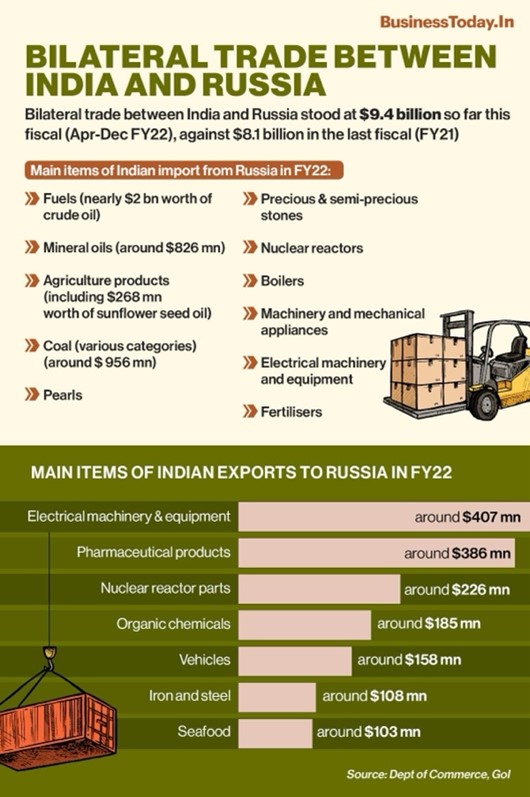
Conclusion:
- The path charted by the Indian leadership is in its national interest at the moment. However, the situation may change if a full scale war breaks out. India must act urgently to end its dependence on Russian Arms. It is true that Russia is critical for India’s defence, but it should avoid getting sucked by the Russian narrative so that the relations with the west are also balanced, which is essential to balance China in the Indo- Pacific Ocean.
Question: Explain India’s stance on the Russia-Ukrain crisis.
Sources:
- India Explains Move To Abstain From UN Vote On Ukraine Invasion:
- Explained: What are India's stakes in Russia-Ukraine crisis:
- The anatomy of India’s Ukraine dilemma:
- The Ukraine crisis and India: Balancing triumph and tribulation:
- Ukraine crisis: India's abstention from voting against Russia explained:
- India’s stand on Ukraine is shaped by its national interest. It should continue to do so — with us or against us doesn’t work:
- India’s Tightrope Walk on Russian Invasion of Ukraine May Have Long-Term Consequences:
- Ukraine: How India’s refusal to take a clear position on the Russian invasion may hurt its interests:
World's Largest Plane
This is image of largest aircraft in the world, which was destroyed recently by Russian troops battling on an airfield near Kyiv, Ukraine. AN-225 'Mriya' -- meaning 'Dream' in Ukrainian -- was manufactured by Ukrainian aeronautics company Antonov, and qualified as the world's largest cargo aircraft. The 6-engine 84-metre-long Antonov An-225 aircraft, known as “Mriya”, with its 32-wheel landing gear, first took to the skies in 1988. Known formally as the “Cossack”, its North Atlantic Treaty Organization (NATO) operating code, the world knew the “super-heavy transport plane” better by its Ukrainian name, “Mriya”, or “the Dream”. It made its maiden landing in India, in May 2016, at Hyderabad’s Shamshabad airport while en route to Perth to deliver a 117-tonne power generator (from Prague, the Czech Republic) to a mine in Australia. It played an important role too in the COVID-19 fight, ferrying nearly 100 tonnes of medicines, laboratory kits, medical masks and personal protective equipment in various missions across Europe, Canada and to Africa.
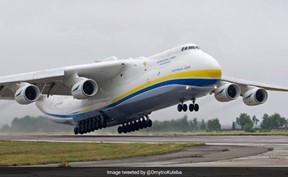
Sources:
Covifenz
- Context: The Canadian government has recently approved the use of the world’s first plant-based COVID-19 vaccine- Covifenz.
- It is the first vaccine to use a plant-based protein technology and has been cleared for use for people between 18 and 64 years of age.
- The vaccine is found to be 71% effective at preventing Covid-19, 75% effective against the highly-infectious delta variant and nearly 89% effective against the gamma variant first identified in Brazil.
- Unlike mRNA, viral vector or inactivated vaccines, plant-derived COVID vaccines use a completely different technology.
- While all other vaccines aim at producing an antigen- a molecule that aims at triggering an immune response against the SARs-COV-2 virus, Covifenz uses plant-based proteins to produce particles that resemble the target viral pathogen.
- It will be administered in 2 doses, 21 days apart.
- The vaccine has been jointly developed by Medicago Inc., a biopharma company owned by Mitsubishi Chemical and Philip Morris based in Quebec City, and GlaxoSmithKline Plc.

Source:
- Canada Approves World's First Plant-Based COVID-19 Vaccine; Know What It Is And How It Differs From Other Vaccines
- Canada approves use of plant-based Covid-19 vaccine, first country to do so
Picture source:
Aravalli Biodiversity Park
- Context: The Aravalli Biodiversity Park has been declared as India’s first “other effective area-based conservation measures” (OECM) site recently.
- The OECM tag is given by IUCN to areas that are not protected but support rich biodiversity.
- It does not bring any legal, financial or management implications, but designates the area as a biodiversity hotspot on the international map.
- The Aravalli Biodiversity Park, spread across 390 acres is situated in Gurgaon, Haryana.
- It is characterized by semi-arid vegetation, with around 300 native plants, 101,000 trees, 43,000 shrubs, rich fauna such as leopards, sambhar, fox, jackals, palm civets etc and several species of birds.
- The Aravallis is one of the oldest mountain ranges in the world, are considered the green lungs of Delhi-NCR as it is a crucial water recharge zone for the region and supplies around 7.07% of the oxygen requirement for the Delhi-NCR.
- The efforts to transform the park into a city forest from a 40-year-old mining site began in 2010 through the efforts of citizens (called IAmGurgaon) , ecologists, scientists etc.
- Several mining pits and barren valley-like spaces in the park are restored with native plants as a part of conservation efforts that help in seasonal water accumulation, making them special micro-habitats within the larger Aravalli landscape.
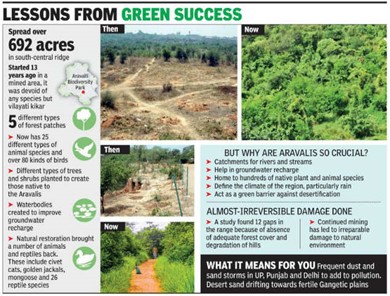
Source:
- Aravalli Biodiversity Park in Gurugram declared as India’s first OECM site
- Aravalli Biodiversity Park
Image source:
JIVA Programme- NABARD
- Context: The National Bank for Agriculture and Rural Development (NABARD) has recently launched the JIVA Programme.
- JIVA is an agroecology-based programme that aims to promote natural farming under NABARD’s existing watershed and wadi programmes in 11 states of the country covering five agroecological zones, that are in ecologically fragile and rain-fed areas.
- It encourages the farming community towards natural farming as commercial farming cannot work in these regions.
- This is ensured using the principles of agroecology long-term sustainability and transforming the pre-existing social and natural capital for natural farming.
- An amount of Rs 50,000 per hectare will be invested under this programme.
- NABARD will collaborate with national and multilateral agencies as this is a knowledge and skill-intensive programme focused on resilience to climate change, food sustainability, nutrition security etc.

Source:
- NABARD launches JIVA to promote natural farming under its existing watershed, wadi programmes
- To rejuvenate life in agriculture fields, NABARD to roll out JIVA
Picture source:
Hermetic Wiper
- Context: Alongside the military attack, Ukraine has been experiencing large-scale cyber-attacks by a destructive data-wiper malware.
- Hermetic Wiper is a new and sophisticated strain of a data-wiper malware that has been detected in hundreds of computers in Ukraine.
- The data-wiper malware, when downloaded, can erase all the data on a device it targets, in a manner that renders the data irretrievable.
- The malware makes use of the disc or storage management software to corrupt the local data on the device, after which it reboots the computer.
- It is also capable of attacking data recovery tools on a system and the rebooting system of a hard drive, making it difficult for the device to reboot into its operating system, essentially making it inoperable.
- This is suspected to be a part of Russia’s “hybrid warfare”, which is using a combination of conventional and advanced tactics- i.e., It involves non-state and state-backed cyber-attacks to remotely target a country’s infrastructure such as financial institutions, government databases, and power grids.

Source:
- Explained | The Hermetic Wiper malware that targeted Ukraine
- AV-Comparatives tests Anti-Virus Software protection against the Hermetic Wiper malware
Picture source:
A judgement that could open floodgates to defection: IE
Essence: As per the author, the Bombay High Court has misread the 10th schedule of the Constitution. Paragraph (4) of the Tenth Schedule exempts defectors from disqualification if their original political party merges with another party and two-thirds of the members of that party in the legislature agree with the merger. In this case, 10 of the 15 opposition party MLAs had joined the ruling party and the Court ruled that these MLAs have not defected, but it is a merger of the political party.
As per the author, the merger of the original political party has to take place first operates for exemption under paragraph (4) to apply. The words “such merger” make it clear that the merger of the original political party has to take place before two-thirds of the members agree to such a merger. The interpretation of the court would open the floodgates of defections and the Supreme Court must intervene.
Why should you read this article?
- To know about the provision of merger of political parties as an exemption to disqualification under the Anti-Defection law.
- To understand how the High Court misread the above provision.
Source:
Democratising STEM skills is crucial to creating a future ready India: HBL
Essence: India contributes 31.7 percent of the world's total STEM graduates and has one of the largest STEM job marketplaces in the world, with the third largest unicorn cluster. With India's expanding scientific prowess, the number of STEM jobs in the country is outnumbering the number of STEM graduates. According to the National Science Foundation, 80 percent of new professions developed in the next decade will demand math and science abilities, thus India's youthful generation must be prepared. However, physical disparities in education frequently outnumber digital disadvantages, allowing only a limited number of individuals to get high-quality STEM education. As the globe moves into a new era of hybrid working and learning ("phygital" education). Only by using technology and tech-driven learning can STEM skills be democratised, and all stakeholders must work together to ensure a smooth transition. This has the potential to transform India's STEM education system and provide experiences that are vital for igniting interest in science education, particularly among kids in impoverished areas. True democratisation of STEM education would not only empower students to influence tomorrow's workforce but will also lead to previously unseen breakthroughs in India's STEM education sector.
Why should you read this article?
- To get an understanding of some STEM statistics and their significance in India.
- To get a better understanding of the barriers to effective STEM education, particularly for kids in under-resourced and disadvantaged communities, as well as possible solutions.
Source:
Coastal cities can battle the climate crisis by adaptation: HT
Essence: The article talks about the IPCC's latest report on Impacts, Adaptation and Vulnerability. The report discusses coastal cities and the potential climate crisis in detail. It highlights that they not only face sea-level rise (SLR), but also a host of other climate risks such as increasing saltwater intrusion, cyclones, frequent flooding due to heavier rainfall events, and in some places, growing water scarcity and more frequent heat waves sometimes occurring simultaneously. Climate crisis in coastal cities along with unsustainable urbanisation have a cascading effect on hinterland especially on the low-income and marginalised communities. According to the report, coastal cities present a tremendous opportunity to anticipate and avoid climate risks, if locally relevant and hybrid interventions are rolled out.
Land reclamation, Mangrove forestation have proved to significant. The key to coastal adaptation is the urgency for action. In coastal cities, where risks are high and increasing, delaying action reduces the choices they have to adapt. Use of Bio-shields, Geotextile tubes, flood proofing buildings etc. can help in mitigation. Indian coastal cities where 80% infrastructure is yet to be built, there is an opportunity to make climate resilient infrastructure. Government of India’s Coalition for Disaster Resilient Infrastructure, a multinational effort led by India to share global knowledge about infrastructure risk management, financing and recovery mechanisms, is one such promising initiative. Strong governance, adequate finances, capacity-building and behavioural change along with timely action is the key.
Why you should read this article?
- The article talks about various climate risks and crisis that the coastal cities shall face in the coming times.
- The article talks about various mitigation measures that can be adapted to protect coastal cities especially in Indian context.
Source:
A mother battling all odds
Background
- Women are considered as the epitome of selfless love especially when it comes to her child.
- Malti aged 37, a hockey player and now a rickshaw driver has fought all possible odds to provide a good upbringing to her son.
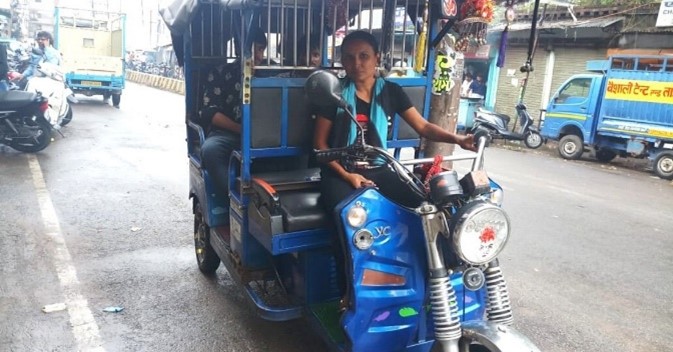
About Malti’s struggle
- Malti, who is born and brought up in Lucknow, was a hockey player and also had the opportunity to play at the state-level.
- But her family’s poor financial condition did not allow her pursue to the sport further. She was married off at an early age
- Her abusive marriage made her leave her husband’s home after her son’s birth and thereon she has been living on her own.
- Although she got the job as hockey coach for the girls team at an university, she had to quit the job of coach due to her son’s illness. Hence, she took up all odd jobs to support her family.
- She was later trained as an e-rickshaw driver by an NGO in Lucknow and the government provided e-rickshaw at no cost.
- Today her 16 year old son is a state-level hockey player.
Quote: There is no greater warrior than a mother protecting her child.- N.K. Jemisin
Source:
Share the article
Get Latest Updates on Offers, Event dates, and free Mentorship sessions.

Get in touch with our Expert Academic Counsellors 👋
FAQs
UPSC Daily Current Affairs focuses on learning current events on a daily basis. An aspirant needs to study regular and updated information about current events, news, and relevant topics that are important for UPSC aspirants. It covers national and international affairs, government policies, socio-economic issues, science and technology advancements, and more.
UPSC Daily Current Affairs provides aspirants with a concise and comprehensive overview of the latest happenings and developments across various fields. It helps aspirants stay updated with current affairs and provides them with valuable insights and analysis, which are essential for answering questions in the UPSC examinations. It enhances their knowledge, analytical skills, and ability to connect current affairs with the UPSC syllabus.
UPSC Daily Current Affairs covers a wide range of topics, including politics, economics, science and technology, environment, social issues, governance, international relations, and more. It offers news summaries, in-depth analyses, editorials, opinion pieces, and relevant study materials. It also provides practice questions and quizzes to help aspirants test their understanding of current affairs.
Edukemy's UPSC Daily Current Affairs can be accessed through:
- UPSC Daily Current Affairs can be accessed through Current Affairs tab at the top of the Main Page of Edukemy.
- Edukemy Mobile app: The Daily Current Affairs can also be access through Edukemy Mobile App.
- Social media: Follow Edukemy’s official social media accounts or pages that provide UPSC Daily Current Affairs updates, including Facebook, Twitter, or Telegram channels.


